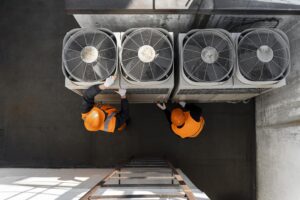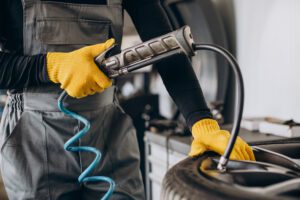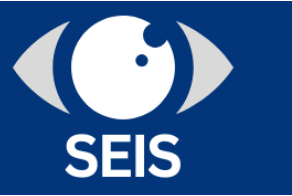PSSR Examination, Inspection & Testing
The Basics;

Definitions;
Relevant Fluid – (a) steam;
(b) any fluid or mixture of fluids which is at a pressure greater than 0.5 bar
above atmospheric pressure, and which fluid or mixture of fluids is—
(i) a gas, or
(ii) a liquid which would have a vapour pressure greater than 0.5 bar
above atmospheric pressure when in equilibrium with its vapour at
either the actual temperature of the liquid or 17.5 degrees Celsius;
or
(c) a gas dissolved under pressure in a solvent contained in a porous
substance at ambient temperature and which could be released from the
solvent without the application of heat

Written Scheme of Examination – A written scheme of examination (WSE), is a legal document, produced by a competent person, required prior to the use of a pressure system. This is legislated by UK regulations detailed in Pressure System Safety Regulations 2000 (PSSR). It details items within a pressure system that require examination by a competent person, and how to prepare for and carried out said examinations.
Pressure x Volume Product – The safe operating limit or design pressure of the vessel, multiplied by the vessel volume. For example, a 25 litre vessel multiplied by a safe operating limit of 11 bar (25 x 11 = 275 bar/litre).
NDT – Non-Destructive Testing, a method of inspecting materials, components or structures, to detect flaws, defects or inconsistencies, without causing damage, or altering the item being tested.
Pressure System – (a) a system comprising one or more pressure vessels of rigid construction,
any associated pipework and protective devices;
(b) the pipework with its protective devices to which a transportable
pressure receptacle is, or is intended to be, connected; or
(c) a pipeline and its protective devices.
Items which fall under the full scope of the Pressure Systems Safety Regulations 2000;
- Steam stored in a vessel at any pressure
- There is a relevant fluid present and the vessel has a pressure x volume product greater than 250 bar/litre
- A refrigeration system with a total installed power of over 25kW and vessel in the system with a pressure x volume product greater than 250 bar/litre

The Pressure Systems Safety Regulations (PSSR) 2000 are a key piece of health and safety legislation in the UK designed to manage the risks associated with pressure systems used in industrial and commercial settings. These regulations specifically address the safety of equipment and systems that contain pressurized fluids, gases, or steam. Pressure systems can include boilers, air compressors, steam pipelines, pressure vessels, and other equipment where there is a potential for the build-up of pressure. The PSSR2000 regulations are essential in preventing accidents, explosions, or other hazardous incidents caused by system failures.
One of the primary requirements of the PSSR is the need for regular examinations of pressure systems. These examinations are carried out by competent personnel, often known as competent persons, who are trained to identify potential risks and ensure that pressure systems meet the necessary safety standards. Examinations are typically required at fixed intervals depending on the nature of the equipment, its usage, and its condition. For example, the regulations stipulate that pressure systems must undergo initial inspections and a Written Scheme of Examination being produced before being put into service and periodic examinations after they are in operation.
The regulations divides pressure systems into three categories: Minor pressure systems, Intermediate pressure systems and Major pressure systems.
Minor systems includes those containing steam, pressurised hot water, compressed air, inert gas or fluorocarbon refrigerants which are small and present few engineering problems. The pressure must not exceed 20 bar above atmospheric pressure (2.0 mpa), except for systems with a direct fire heat source, which must not exceed 2 bar. There are also restrictions on the pressure x volume product, it must not exceed 20 MPa m3 and the temperature in the system should be between -25°C and 250°C.
Intermediate systems include most storage systems which do not fit in either minor pressure or major pressure systems, and fit in between the parameters of both.
Major systems are categorized due to their engineering complexity, size, hazardous contents and they require the greatest expertise. They include steam generators where their individual capacity is greater than 10 MW, and a system whose largest vessel has a pressure x volume product greater than 100 MPa m3.
During a PSSR examination, the competent person will check various aspects of the pressure system, including its structural integrity, system protective devices (such as safety valves and pressure gauges), and the general condition of pipe work, fittings, and seals. They will also inspect the equipment for signs of corrosion, wear, or damage that could compromise its safety. The examination may involve both visual inspections and non-destructive testing (NDT) techniques to ensure there are no hidden defects within the system. If any issues are found, the competent person will recommend corrective actions, which may include repairs or replacements parts to bring the system up to safety standards.

In addition to regular examinations, PSSR also requires that pressure systems are maintained and operated in a way that minimizes risks. This includes ensuring that operators are trained in the proper use of the equipment and in emergency procedures should a system failure occur. Employers must keep a record of all examinations, including the details of the inspector’s findings and any corrective actions taken. This documentation is important for regulatory compliance and for ensuring that the pressure system remains safe for ongoing use.
Failure to comply with PSSR regulations can result in serious consequences, including fines, legal liability, and, most importantly, the risk of accidents or fatalities due to pressure system failures. Therefore, it is essential for employers and operators to ensure that their pressure systems are regularly examined by qualified personnel and maintained according to the guidelines set forth in the PSSR. By doing so, they help ensure the safety of workers, the public, and the environment.
